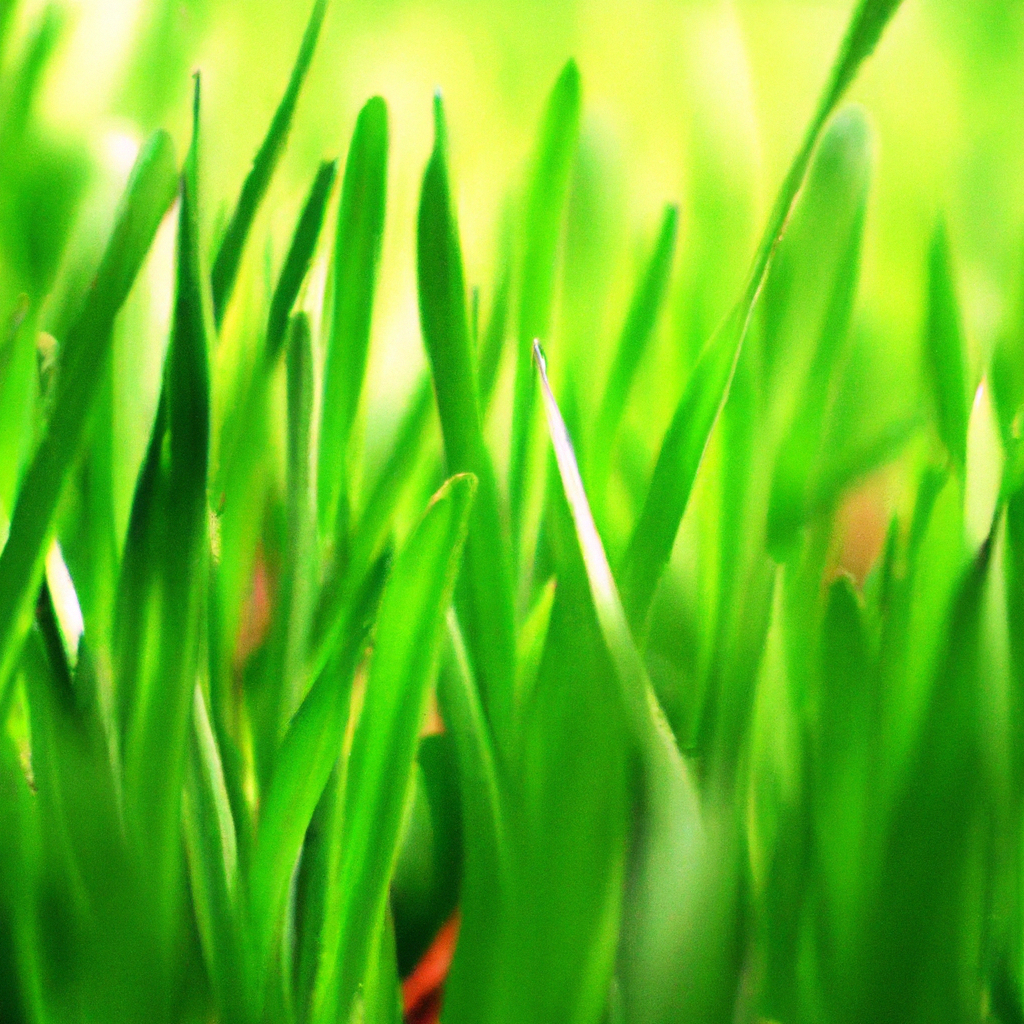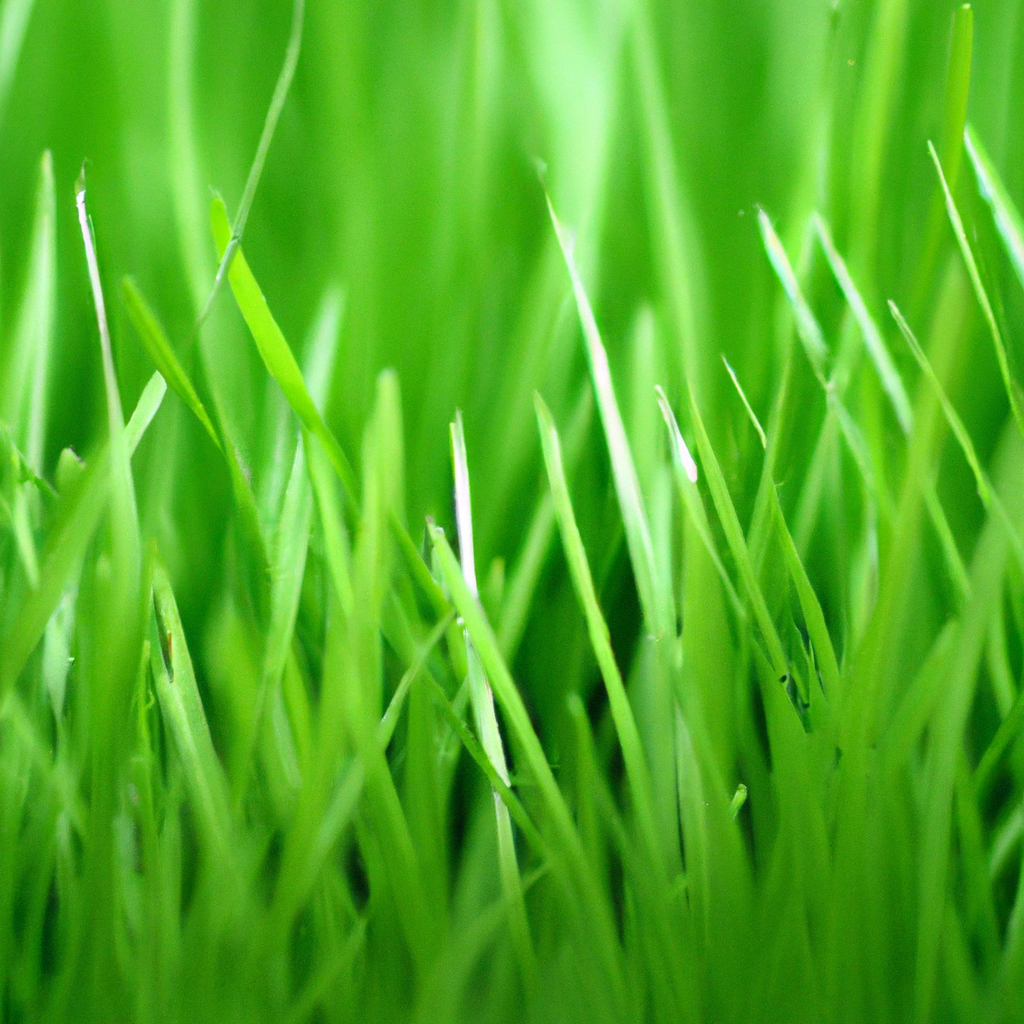Imagine a world covered in a lush carpet of green, stretching as far as the eye can see. Have you ever wondered just how many blades of grass exist on our vast planet? Prepare to have your mind blown as we unveil the surprising truth behind this seemingly simple question. From the tiniest strands in your backyard to the sprawling grasslands of the savannah, the number may not be what you expected. So, take a moment to ponder this captivating mystery, because the answer might just leave you astounded.

The Significance of Grass in the Ecosystem
Grass, a seemingly simple and unassuming plant, plays a crucial role in the ecosystem. As a primary producer, grass is the foundation of many food chains, converting sunlight and carbon dioxide into energy through photosynthesis. This energy is then consumed by herbivores, which in turn become food for predators higher up the food chain. Without grass, the entire ecosystem would unravel, and countless species would be left without a vital source of food and energy.
In addition to its role as a primary producer, grass also plays a vital role in the carbon cycle. Through photosynthesis, grass absorbs carbon dioxide from the atmosphere, storing carbon in its stems and leaves. This carbon is then released back into the atmosphere when grass is decomposed by bacteria or burned. Grasses and other plants help regulate the levels of carbon dioxide in the atmosphere, playing a critical role in mitigating climate change.
The Diversity of Grass Species
Grass, as a plant family, encompasses a staggering diversity of species. From the delicate blades of bamboo to the tall and sturdy stalks of sugarcane, grasses come in various shapes, sizes, and colors. The classification of grass species is based on characteristics such as growth habit, leaf structure, and reproductive features. This classification allows scientists to better understand and study the different types of grasses present in different regions of the world.
Grasses can be found in almost every corner of the globe, adapting to an impressive range of climates and soil conditions. From the lush grasslands of Africa to the arid steppes of Eurasia, grasses have evolved to thrive in different environments. Each region boasts its unique assemblage of grass species, contributing to the overall biodiversity of the planet.
Factors Affecting Grass Growth
Several factors influence the growth and development of grasses. Climate and temperature play a significant role, as certain grass species thrive in hot and dry environments, while others prefer cooler and moist conditions. Soil conditions, including fertility, texture, and pH levels, also impact grass growth. Some grasses can tolerate acidic soils, while others prefer alkaline or neutral conditions.
Rainfall and water availability are crucial for grass growth, with some species being more drought-tolerant than others. Sunlight is another essential factor, as grasses require adequate light for photosynthesis. Competition with other plants can also affect grass growth, as neighboring plants may compete for resources such as water, nutrients, and space.
Estimating the Global Grass Population
Estimating the global grass population is a complex task that requires a combination of historical perspectives, remote sensing, and satellite data. Historically, scientists have relied on ground surveys and sample studies to estimate grass populations in specific areas. However, these methods can be time-consuming and limited in terms of coverage.
The advent of remote sensing has revolutionized the study of grass populations. Remote sensing techniques, such as using satellites and aerial imagery, provide valuable insights into the density and distribution of grasses across vast areas. By analyzing the reflectance patterns of vegetation, scientists can estimate grass populations more accurately and efficiently.
Nevertheless, there are still challenges in accurately estimating the global grass population. Remote areas and inaccessible environments present difficulties in data collection, making it challenging to obtain a comprehensive picture of grass populations worldwide. Additionally, the vast diversity of grass species adds another layer of complexity to the estimation process.
Grasslands: The Dominant Habitat
Grasslands are one of the most dominant and widespread habitats on Earth, covering approximately one quarter of the planet’s land surface. These unique ecosystems are characterized by their lush carpets of grasses, interspersed with scattered trees and shrubs. Grasslands can be found in every continent, with variations in climate, flora, and fauna.
There are several types of grasslands, each with its unique characteristics. The temperate grasslands, such as the American prairies, are characterized by their cold winters and hot summers. Tropical grasslands, like the African savanna, have a more consistent climate throughout the year. Some grasslands, such as the Eurasian steppe, are semi-arid and experience a wide range of temperatures.
The Great Grassland Biomes
The African Savanna is a vast grassland stretching across the continent, known for its iconic wildlife and dramatic annual migrations. This diverse ecosystem supports an array of herbivores, such as elephants, zebras, and wildebeests, as well as predators such as lions and cheetahs. It is one of the most biodiverse regions on Earth, with countless species dependent on the grasses for survival.
The Eurasian Steppe encompasses a vast expanse of grassland stretching from Eastern Europe to Asia. This biome is characterized by its continental climate, with extreme temperature variations and low rainfall. The Eurasian steppe is home to several iconic grass species, such as feather grass and Stipa, which have adapted to survive in this challenging environment.
The North American Prairie once covered vast areas of the United States and Canada, boasting an incredible diversity of grass species. This grassland biome was home to numerous iconic species, including bison and pronghorn, before extensive human settlement and conversion of the land for agriculture.
The South American Pampas is an extensive grassland covering parts of Argentina, Uruguay, and Brazil. This region is known for its rich soils, favorable climate, and abundant grass species. The Pampas has a long history of agriculture and livestock grazing, with cattle ranching being a significant economic activity in the area.
The Australian Rangelands are vast grasslands covering a significant portion of the continent. This region is characterized by its arid and semi-arid climate, with low and unreliable rainfall. Despite the challenging conditions, Australian grasses have evolved unique adaptations to survive in this harsh environment.
Grass as Livestock Feed
Grass serves as a fundamental food source for grazing animals, making it a vital component of livestock production systems worldwide. Cows, sheep, and horses are just a few examples of herbivores that heavily rely on grass for their survival. Grazing animals consume grass directly, converting it into energy and nutrients necessary for their growth and development.
The nutritional value of grass varies depending on the species and growing conditions. Pastures rich in diverse grass species provide a balanced diet for livestock, ensuring they receive the necessary nutrients for optimal health. Some grasses, such as alfalfa and clover, are particularly high in protein, making them highly desirable for grazing animals.
Man-Made Lawns and Turfs
Grass has also found its place in urban and recreational spaces through the establishment of man-made lawns and turfs. Residential lawns and gardens provide aesthetic value and recreational areas for families and communities. Maintaining a healthy lawn often involves mowing, watering, and fertilizing to ensure the grass remains green and vibrant.
Sports fields and golf courses are other examples of man-made grasslands designed specifically for recreational purposes. These areas require specialized grass species that can withstand heavy foot traffic and frequent use. These grasses are often hybrid varieties that are carefully selected and maintained to provide the optimal playing surface.

The Unknown Factors
While much is known about the significance and diversity of grass, there are still many unknown factors when it comes to this versatile plant. Remote areas, such as unexplored rainforests or inaccessible mountains, may harbor unique and undiscovered grass species. The vastness of the world’s grass populations makes comprehensive studies and surveys a challenging task.
Some grasses also thrive in extreme environments, such as deserts or high altitudes, where few other plants can survive. These grasses may possess adaptations and survival strategies that are yet to be fully understood by scientists. Exploring these unexplored grass species could potentially unveil new insights into their resilience and their potential applications.
The Importance of Grass Conservation
Given the significant role that grass plays in the ecosystem and the threats it faces, grass conservation is crucial for maintaining the balance of the natural world. Loss of grasslands due to deforestation, urban development, and agriculture can lead to a decline in biodiversity and disrupt the delicate relationships between plants and animals.
Conservation efforts and restoration projects are essential in preserving and restoring grass ecosystems. Protecting existing grasslands, promoting sustainable land management practices, and raising awareness about the value of grass are all critical steps in ensuring the long-term survival of this essential plant.
In conclusion, the significance of grass in the ecosystem cannot be overstated. From its role as a primary producer and its contribution to the carbon cycle to its diverse species and importance as a food source, grass plays a vital role in maintaining the balance of the natural world. By understanding and conserving grass populations, we can ensure a sustainable future for both the environment and the countless species that depend on this remarkable plant.



